Early days of the New York and Harlem Railroad
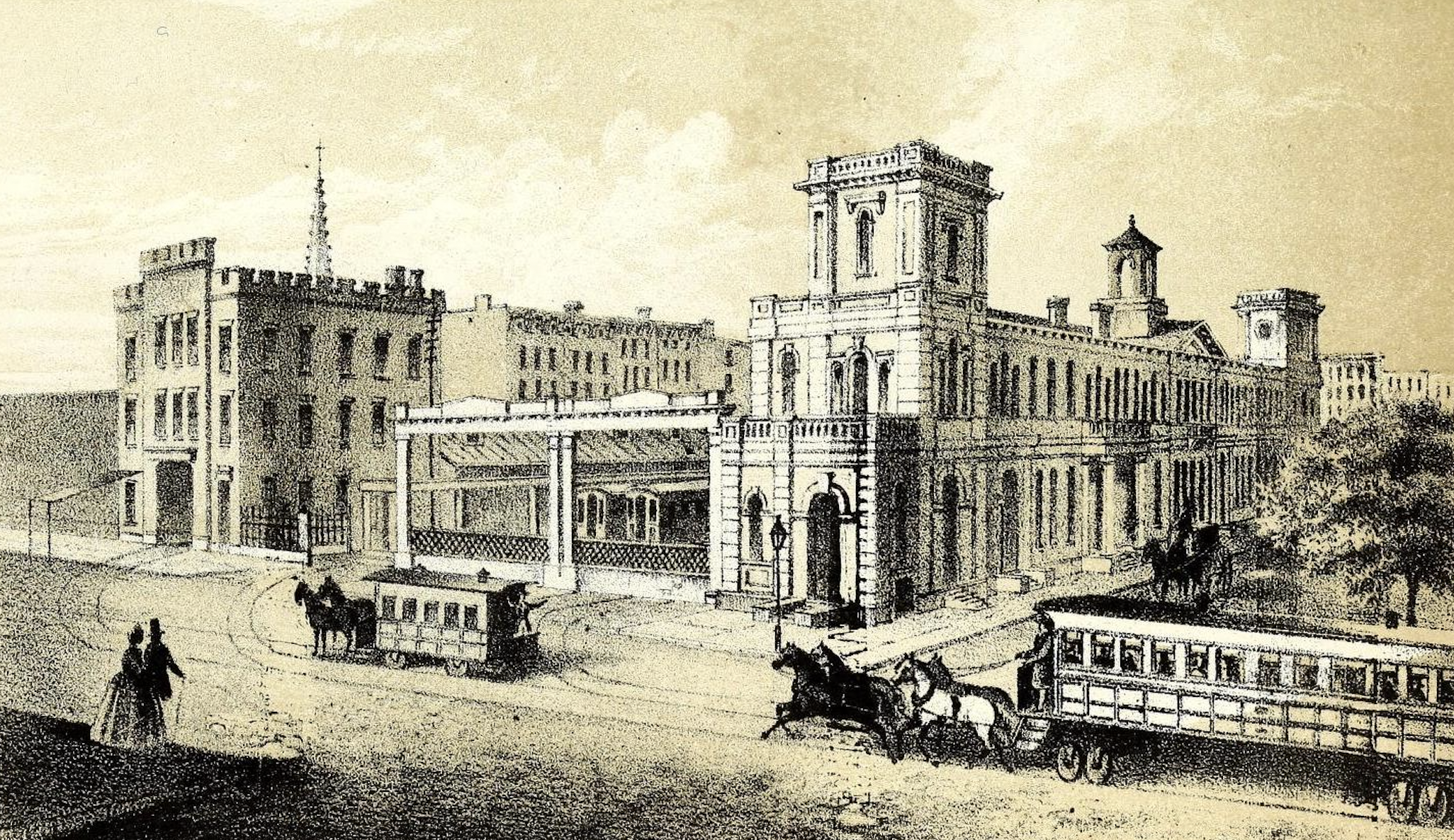
The New York and Harlem Railroad depot, on the corner of 4th Avenue and 27th Street. It had space to store the cars, along with stables for the horses.
From Valentine’s Manual of Old New York, edited by D.T. Valentine, 1860.
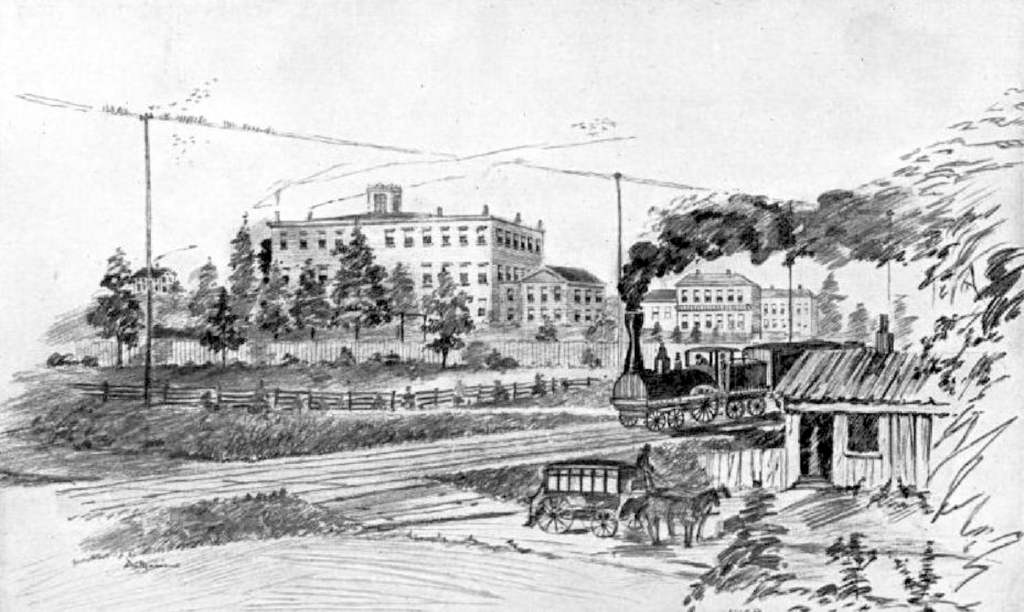
A steam train nearing the intersection of 42nd Street and 4th Avenue, 1853. At the time, 42nd Street was little more than a cow path, bringing cattle from the Hudson River ferries across to the east side slaughterhouses. After a deadly boiler explosion in 1839, steam locomotives were banned south of 32nd Street, so a depot was built there and customers switched over to horse-drawn cars.
From Fifth Avenue Old and New, 1824-1924 by Henry Collins Brown.
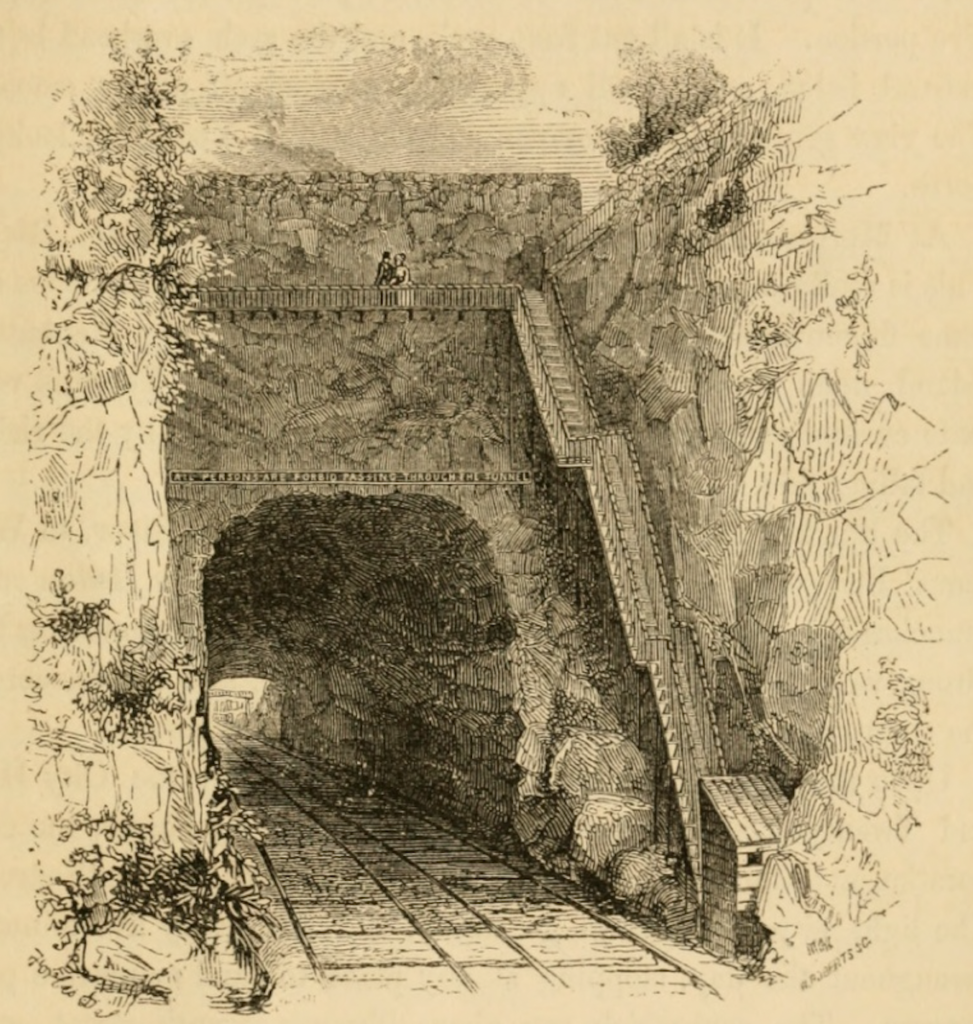
The Yorkville Tunnel c. 1850. The railroad had purchased a small steam locomotive in 1834, but its boiler exploded, and service resumed with horse-drawn cars on the rails. After another explosion that proved deadly, steam service was curtailed.
From New York and the White Mountains; with a complete map, and numerous wood-cut views of the principal objects of interest upon the line by William Guild, 1852.
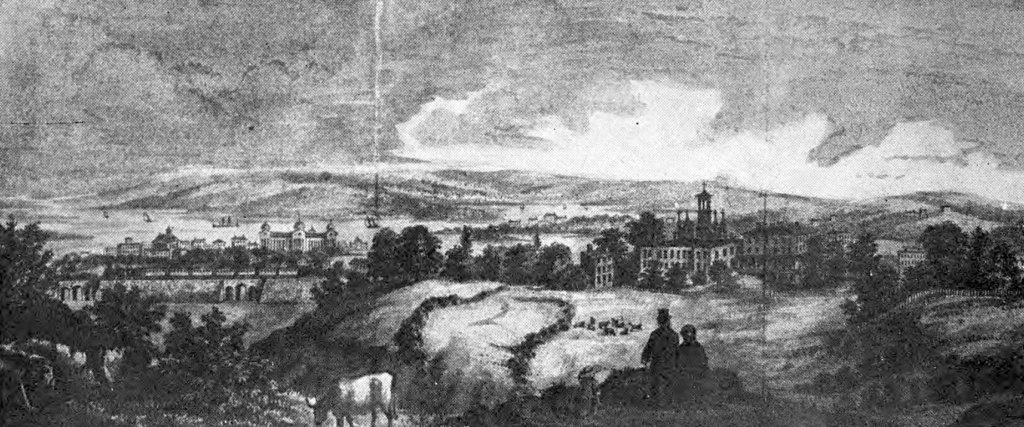
Looking east from Mount Prospect in what is now the northern part of Central Park, 1856. To the right is Mt. Saint Vincent convent and school. On the lower left a train can be seen proceeding south on the viaduct. Hotel proprietor George Nowlan operated a hotel nearby called “Prospect Hall,” which became a popular pleasure spot for folks using the railroad.
From The New York Historical Society Quarterly Bulletin, January 1926, Volume XI, Number 4.
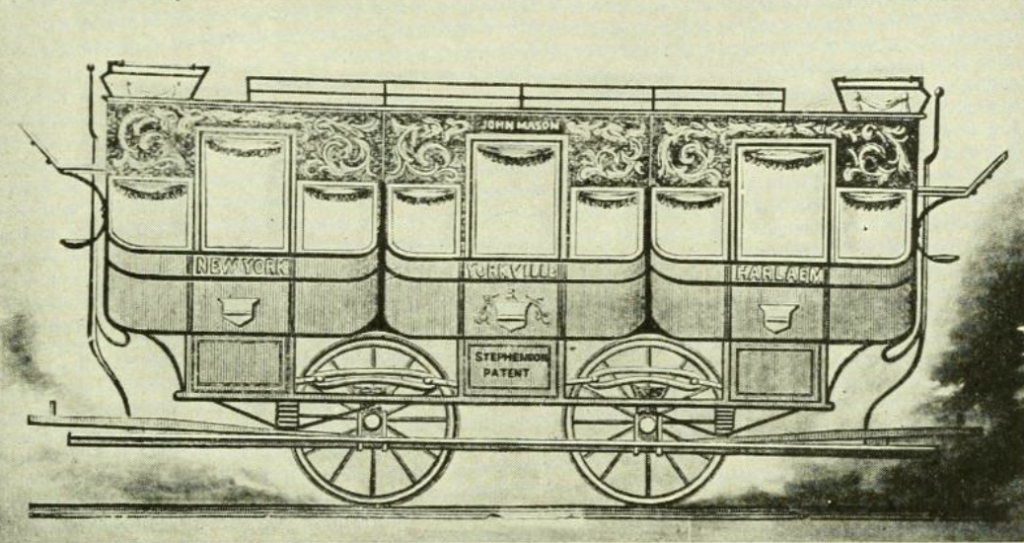
The elegant John Mason horse-drawn car, with three compartments for passengers, inscribed with “New York,” “Yorkville,” and “Harlem.”
From A popular history of American invention by Waldemar Kaempffert.
